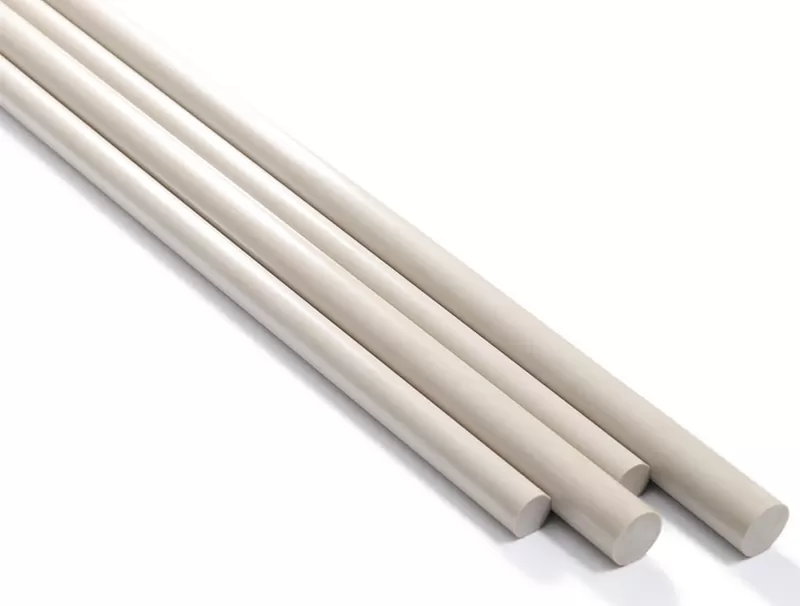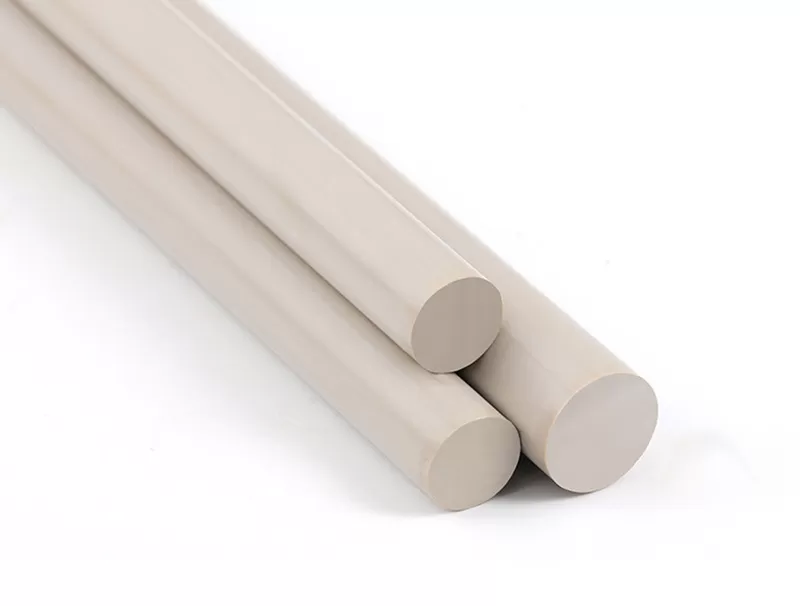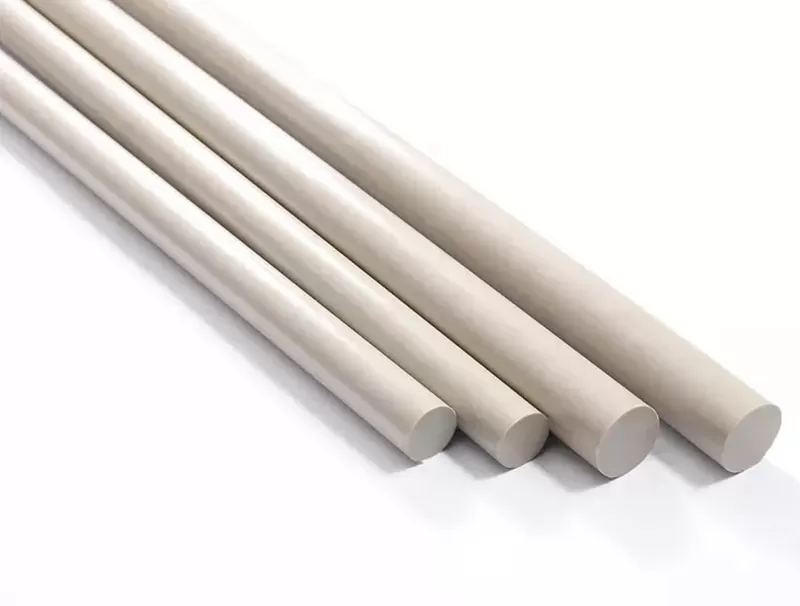


Medical-grade, Biocompatible PEEK Polymer Materials
Implantable PEEK rods have shown remarkable felicities over typical biomedical implants such as metallic alloys, ceramics, and polyethylenes. PEEK is now used to design medical implants in joint replacement systems, spine implants, and cages in vertebral fusion surgeries.
Our wide range of biocompatible polymer materials and compounds are each designed to meet the specific and rigorous demands of implantable medical devices. PEEK materials are tailored to offer superior performance in a variety of applications including spine, orthopedic, trauma, dental and specialty devices. Innovative PEEK materials and our in-depth manufacturing knowledge combined with application expertise supports medical device companies to bring leading edge devices to market and open up new areas of growth.
ARKPEEK medical grade PEEK ARK-BioPEEK rods and bars are high-performance, implantable-grade polyetheretherketone materials specifically formulated for precision machining of custom medical devices and implants. Manufactured to meet stringent biocompatibility standards such as ISO 10993 and ASTM F2026, these rods are ideal for applications requiring long-term contact with bodily tissues and fluids, including orthopedic implants, spinal cages, dental prosthetics, and trauma devices.
The implantable ARKPEEK rods exhibit outstanding mechanical strength, toughness, and stiffness with a flexural modulus closely matching cortical bone, reducing stress shielding and promoting better patient outcomes. Their excellent chemical resistance ensures durability against bodily fluids, cleaning agents, and sterilization processes including steam autoclaving, ethylene oxide, and gamma radiation, without degradation of physical or biocompatible properties.
Available in a wide range of diameters and lengths, ARKPEEK rods facilitate efficient machining with minimal material waste and tight dimensional tolerances, supporting complex geometries and high-precision medical components. The material’s radiolucency enables clear imaging via X-ray, CT, and MRI, aiding post-operative assessment without interference.
Key Benefits
Certified Biocompatibility: Complies with ISO 10993 and ASTM F2026 for implantable medical devices.
Superior Mechanical Performance: High tensile strength, fatigue resistance, and modulus similar to bone.
Chemical & Sterilization Resistance: Maintains integrity after repeated sterilization cycles.
Radiolucent: Compatible with medical imaging techniques.
Customizable Sizes: Available in various diameters and lengths to suit machining needs.
Widely used in the manufacture of spinal implants, joint replacements, dental devices, and trauma fixation systems, ARKPEEK implantable PEEK rods offer medical device manufacturers a reliable, high-quality polymer solution that meets rigorous regulatory and functional requirements.
_______________________________________________________________________________________________________________________________________________________________________
| Properties Information | ||||||
| Property | Reference Standard | Test Method | Unit | Specification | Result | |
| Physical Properties | Glass Transition | ASTM F2026 | ASTM D3418 | °C | 125-165 | 147 |
| Temperature, Tg | ||||||
| Melt Temperature, Tm | ASTM F2026 | ASTM D3418 | °C | 320-360 | 338 | |
| Recrystallization | ASTM F2026 | ASTM D3418 | °C | 260-320 | 289 | |
| Temperature, Tc | ||||||
| Viscosity | ASTM F2026 | ISO 11443 | Pa·s | 400-480 | 437 | |
| Infrared Spectrum | ASTM F2026 | ASTM F1579 | / | See Appendix X1 | See Appendix X2 | |
| Density | ASTM F2026 | ASTM D1505 | kg/m3 | 1280-1320 | 1294 | |
| Chemical Properties | Total Heavy Metals (Ag, As, Bi, Cd, Cu, Hg, Mo, Pb, Sb, and Sn), max | ASTM F2026 | US Pharmacopeia, | ppm | <100 | <10 |
| Test 233 | ||||||
| Mechanical Properties | Tensile Strength at Yield (zero slope), min | ASTM F2026 | ASTM D638, Type IV, 5.08 cm/min | MPa | 90 | 105 |
| Tensile Strength at Break, min | ASTM F2026 | ASTM D638, Type IV, 5.08 cm/min | MPa | 70 | 80 | |
| Elongation at Break, min | ASTM F2026 | ASTM D638, Type IV, 5.08 cm/min | % | 5 | 18 | |
| Flexural Strength, min | ASTM F2026 | ASTM D790 | MPa | 110 | 163 | |
| Flexural Modulus, min | ASTM F2026 | ASTM D790 | GPa | 3 | 4 | |
| Impact Strength, | ASTM F2026 | ISO 180 | kJ/m2 | 4 | 9 | |
| Notched Izod, min | ||||||
| Biological Properties | Genotoxicity | ISO 10993-3 | ISO 10993-3 | / | Negative | Negative |
| Animal Intracutaneous (Intradermal) Reactivity | ISO 10993-10 | ISO 10993-10 | / | ≤1 | 0 | |
| Skin Sensitization | ISO 10993-10 | ISO 10993-10 | / | ≤1 | 0 | |
| Acute Systemic Toxicity | ISO 10993-11 | ISO 10993-11 | / | No Acute Systemic Toxicity | No Acute Systemic Toxicity | |
| Subchronic Systemic Toxicity | ISO 10993-11 | ISO 10993-11 | / | No Subchronic Systemic Toxicity | No Subchronic Systemic Toxicity | |
| local Effects After Implantation | ISO 10993-6 | ISO10993-6 | / | No obvious difference between the test sample and the control sample | No obvious difference between the test sample and the control sample | |
| In Vitro Cytotoxicity | ISO 10993-5 | ISO10993-5 | / | ≤1 | 1 | |
| Evaluation of Haemolytic Properties | ISO 10993-4 | ISO10993-4 | % | <5 | 1 | |
| Material Mediated Pyrogens | ISO 10993-11 | ISO 10993-11 | / | No Pyrogenic Responses | No Pyrogenic Responses | |
| Extractables of The Material | ISO 10993-18 | ISO 10993-18 | μg/g | The contents of Phenyl Sulfone≤300 | The contents of Phenyl Sulfone<0.09 | |
_______________________________________________________________________________________________________________________________________________________________________